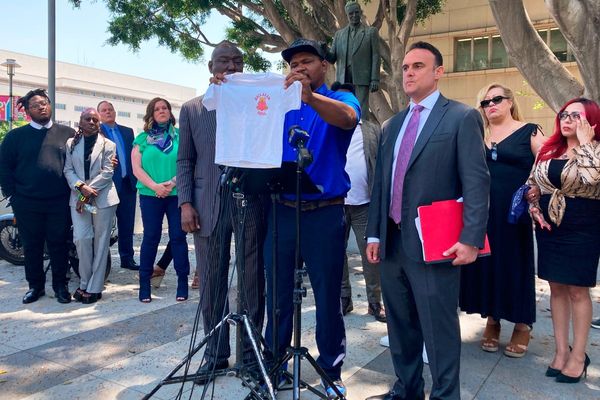
Six years ago, the Centers for Disease Control and Prevention (CDC) issued guidelines that discouraged doctors from prescribing opioids for pain and encouraged legislators to restrict the medical use of such drugs. Those guidelines, which had a disastrous impact on pain patients, were based on the assumption that overprescribing was responsible for rising drug-related deaths. But according to a new Frontiers in Pain Research study, that assumption is no longer true, if it ever was.
To support its theory that opioid prescriptions were driving drug-related deaths, independent researcher Larry Aubry and statistician B. Thomas Carr note, the CDC cited numbers that were already out of date. More recent data do not support the premise underlying the agency's pernicious advice. The CDC nevertheless included the same outdated analysis in the revised pain treatment guidelines that it published last February, which aim to ameliorate the damage done by the original version.
"It is critical that public health policy and individual patient care not be based on out-of-date or misleading information," Aubry and Carr write. They note that "the direct correlations used to justify the CDC guideline and guideline update," which "existed from 1999 to 2010," are "no longer present." The implication, they say, is that policies aimed at reducing opioid prescriptions are "unfounded and ineffective."
Explaining "the importance of prescribing guidelines" in 2015, the Department of Health and Human Services cited "a clear correlation between opioid prescribing rates and overdose death rates in the United States." From 1999 to 2010, it noted, "opioid prescribing quadrupled in parallel to increasing opioid overdose death rates."
When the CDC issued its guidelines the following year, the agency's director, Tom Frieden, said "overprescribing opioids—largely for chronic pain—is a key driver of America's drug-overdose epidemic." In congressional testimony two years later, Andrew Kolodny, director of Physicians for Responsible Opioid Prescribing, likewise claimed "the CDC has shown that a sharp increase in prescriptions for opioids resulted in a corresponding rise in addiction and overdose deaths."
Using data for 2010 through 2019, Aubry and Carr looked at the relationship between prescription opioid sales, measured by morphine milligram equivalents (MME) per capita, and four outcomes: total drug-related deaths, total opioid-related deaths, deaths tied specifically to prescription opioids, and "opioid use disorder" treatment admissions. "The analyses revealed that the direct correlations (i.e., significant, positive slopes) reported by the CDC based on data from 1999 to 2010 no longer exist," they write. "The relationships between [the outcome variables] and Annual Prescription Opioid Sales (i.e., MME per Capita) are either non-existent or significantly negative/inverse."
Those findings held true in "a strong majority of states," Aubry and Carr report. From 2010 through 2019, "there was a statistically significant negative correlation (95% confidence level) between [opioid deaths] and Annual Prescription Opioid Sales in 38 states, with significant positive correlations occurring in only 2 states. Ten states did not exhibit significant (95% confidence level) relationships between overdose deaths and prescription opioid sales during the 2010–2019 time period."
During that period, MME per capita dropped precipitously, falling by nearly 50 percent between 2009 and 2019. By 2021, prescription opioid sales had fallen to the lowest level in two decades.
Policies and practices inspired by the CDC's 2016 guidelines contributed to that downward trend. Aubry and Carr note that "forty-seven states and the District of Columbia" now "have laws that set time or dosage limits for controlled substances." In a 2019 survey by the American Board of Pain Medicine, the American Medical Association reports, "72 percent of pain medicine specialists" said they had been "been required to reduce the quantity or dose of medication" they prescribed as a result of the CDC guidelines.
The consequences for patients have not been pretty. They include undertreatment, reckless "tapering" of pain medication, and outright denial of care. In 2019, the Food and Drug Administration said it had "received reports of serious harm in patients who are physically dependent on opioid pain medicines suddenly having these medicines discontinued or the dose rapidly decreased." It said the consequences "include serious withdrawal symptoms, uncontrolled pain, psychological distress, and suicide." The extent of such problems was reflected in an admonition that the CDC included in its revised guidelines: "Clinicians should not abandon patients."
The authors of the original guidelines say their advice was misinterpreted and "misimplemented," but that was a danger they should have anticipated. The revised version no longer implies that opioid doses exceeding 90 MME a day are ipso facto medically inappropriate. But it urges caution about raising doses for patients with "subacute or chronic pain" above 50 MME per day, even while emphasizing that does not mean patients who already exceed that level must be forced to get by with less.
"The recommendations related to opioid dosages are not intended to be used as an inflexible, rigid standard of care," the CDC says. "Rather, they are intended to be guideposts to help inform clinician-patient decision making. Further, these recommendations apply specifically to starting opioids or to increasing opioid dosages, and a different set of benefits and risks applies to reducing opioid dosages."
Despite the sharp decline in medical use of opioids, the upward trend in opioid-related deaths, primarily involving illicit fentanyl, has not only continued but accelerated. Last year that number reached the highest level ever recorded. Like the "misinterpretation" of the CDC's advice, that outcome was entirely predictable, since the crackdown on pain pills drove nonmedical users (and some patients) toward black-market products that are much more dangerous because their composition and potency are uncertain and highly variable.
Yet the CDC is still pushing the narrative that more opioid prescribing means more opioid-related deaths. "In addition to the potential risks for patients prescribed opioids, these medications carry risks due to their potential for diversion and nonmedical use among individuals to whom they were not prescribed," it says in the 2022 guidelines. "In the United States, opioid prescribing increased four-fold between 1999 and 2010, and this increase was paralleled by a nearly four-fold increase in overdose deaths involving prescription opioids during the same time period…as well as increases in prescription opioid use disorder."
In light of what has happened since 2010, Aubry and Carr say, relying on those outdated numbers is highly misleading. They say the CDC's advice "should be corrected/updated to state no direct correlation has existed" between prescription opioid sales and drug-related deaths or treatment admissions since 2010, and "individualized patient care and public health policy should be amended accordingly."
The post A New Study Finds No Correlation Between Opioid Prescriptions and Drug-Related Deaths appeared first on Reason.com.







